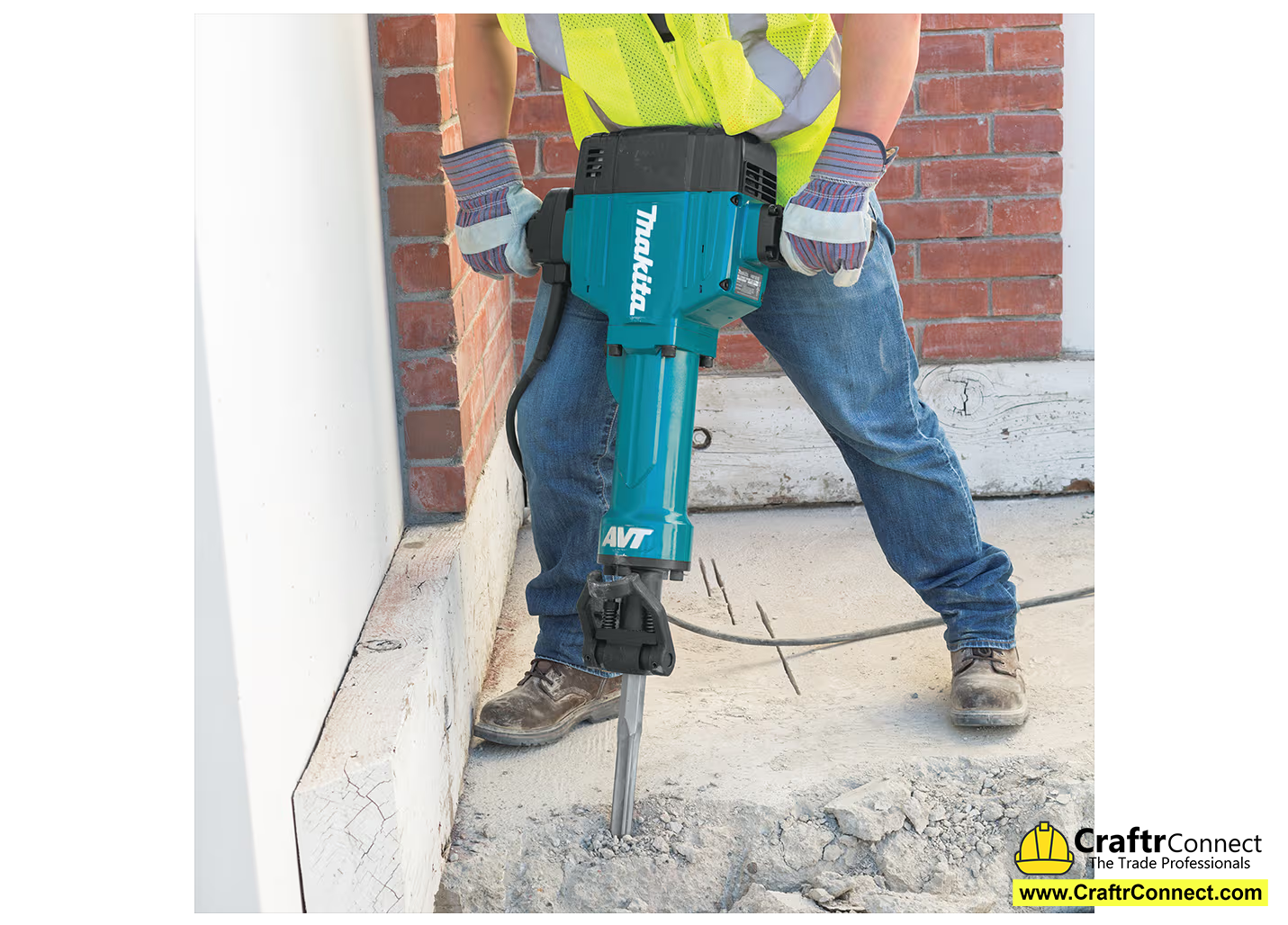
Overview of Jackhammer Types and How They Work
Jackhammers are essential tools for demolition and heavy-duty construction projects. Whether you're breaking through concrete, asphalt, or tough materials, understanding the different types of jackhammers and how they work can help you select the right tool for your needs. In this blog, we'll break down the three main types of jackhammers: electric, pneumatic, and hydraulic—explaining their uses, advantages, and how they operate.
What is a Jackhammer?
A jackhammer, also known as a pneumatic drill, is a powerful tool used primarily for breaking, drilling, or chiseling through hard materials like concrete, rock, or asphalt. It uses rapid, repeated hammering actions to break tough surfaces, making it a go-to tool in construction, demolition, and road repair projects.
Jackhammers typically consist of a handle, a motor, and a chisel or bit at the end. Depending on the power source and how the hammer mechanism works, the tools can vary in size, weight, and impact.
Types of Jackhammers
There are three common types of jackhammers, each designed for specific applications and environments: electric, pneumatic, and hydraulic.
1. Electric Jackhammers
How They Work:
Electric jackhammers are powered by an electric motor that drives the piston mechanism. When you pull the trigger, the motor activates the hammer, causing the piston to strike the bit repeatedly. These are generally more compact and user-friendly compared to other types.
Advantages:
-
Easy to use: Electric jackhammers are often lighter and more manageable than their pneumatic or hydraulic counterparts.
-
No need for air or fuel: They are powered directly by electricity, meaning there's no need for an external compressor or fuel source.
-
Ideal for indoor use: Since electric models don't produce exhaust or fumes, they are a great choice for indoor work, such as breaking concrete floors or installing plumbing in buildings.
Best For:
-
Small to medium construction and renovation projects
-
Breaking concrete, tile, or stone
-
Indoor demolition work, where ventilation is an issue
2. Pneumatic Jackhammers
How They Work:
Pneumatic jackhammers are powered by compressed air supplied through a hose connected to an air compressor. The compressor generates high-pressure air, which drives the hammer mechanism to deliver forceful blows. Pneumatic tools tend to be heavier and more powerful than electric models.
Advantages:
-
Higher power output: Pneumatic jackhammers are capable of delivering more force, making them suitable for tougher demolition tasks.
-
Lighter weight for power: The air-driven mechanism allows for a lighter tool, even though it delivers a lot of force, which makes them easier to handle for longer periods.
-
Durable and reliable: Pneumatic tools are known for their durability and performance in heavy-duty environments.
Best For:
-
Large-scale demolition projects
-
Roadwork or sidewalk repairs
-
Breaking through tough concrete or rock
3. Hydraulic Jackhammers
How They Work:
Hydraulic jackhammers are powered by hydraulic fluid that flows through a pump system. The hydraulic pressure drives the piston and striking mechanism. Hydraulic hammers typically require an external hydraulic power source (e.g., a separate pump or vehicle) to operate.
Advantages:
-
Extreme power: Hydraulic jackhammers are the most powerful of the three, capable of handling the toughest applications such as breaking solid rock or thick concrete.
-
Efficiency and control: Hydraulic systems allow for fine control of power, which can improve both efficiency and precision during use.
-
Longer operation periods: Since the hydraulic system tends to run cooler than electric or pneumatic systems, these tools can be operated for longer durations without overheating.
Best For:
-
Large-scale industrial demolition
-
Mining and rock drilling
-
Heavy-duty construction sites requiring maximum impact force
Which Jackhammer is Right for Your Project?
The right jackhammer for you depends on your project’s specific needs. Here’s a quick guide to help you decide:
-
For lighter, indoor projects: An electric jackhammer is a great choice for smaller tasks like breaking up concrete floors or removing tile indoors.
-
For medium to large demolition jobs: A pneumatic jackhammer is ideal for roadwork, concrete demolition, or other high-powered tasks requiring greater mobility.
-
For heavy-duty industrial work: A hydraulic jackhammer is your go-to tool for breaking through tough rock or massive slabs of concrete.
Conclusion
Jackhammers come in a variety of types and sizes, each suited for specific tasks and environments. Electric, pneumatic, and hydraulic jackhammers each have their unique benefits, and understanding how they operate can help you select the right one for your next project. Whether you're working on small renovations or large-scale demolition, knowing the differences between these tools will ensure you have the right power and performance to get the job done efficiently and effectively.
Need to rent a jackhammer? Browse our selection of rental equipment, including top-rated models from trusted brands, to find the right fit for your next project!
